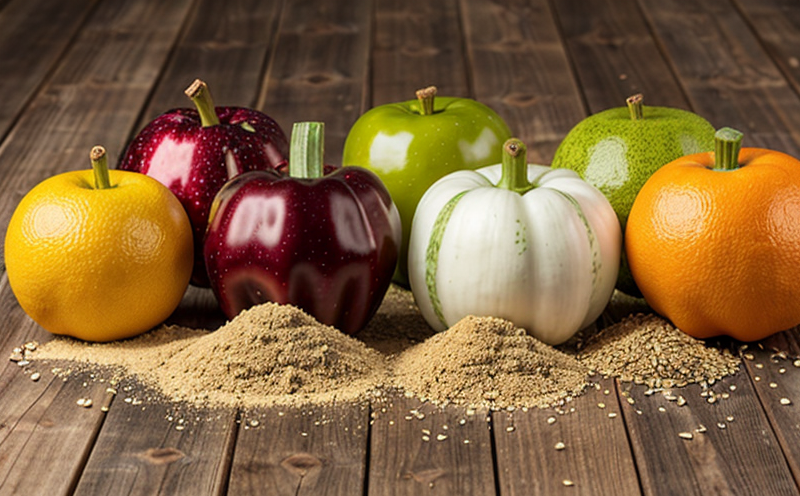AOAC 991.15 Coliform Count in Fruit Juices
The AOAC 991.15 method is a widely recognized procedure for determining the coliform count in fruit juices, which is essential for ensuring food safety and quality control. Coliform bacteria are a group of Gram-negative, rod-shaped bacteria that do not form spores, ferment lactose with gas formation, and grow at 35°C-36°C. They serve as an indicator organism to assess the sanitary quality and potential contamination by enteric pathogens in food products.
The AOAC International standard method 991.15 provides a standardized approach for quantifying coliforms through membrane filtration or most probable number (MPN) techniques. The procedure involves inoculating the fruit juice sample with specific reagents designed to enhance the growth of coliform bacteria while inhibiting other microorganisms, ensuring accurate enumeration.
This method is particularly important in the fruit juice industry because it helps manufacturers meet regulatory requirements and maintain consumer confidence by demonstrating adherence to safety standards. Regulatory bodies such as the U.S. Food and Drug Administration (FDA) and the European Commission (EC) have adopted this standard for monitoring coliform levels in beverages.
The AOAC 991.15 test is applicable not only to fruit juices but also to other related products like nectars, concentrates, and syrups. It ensures that these products meet the required standards set by international organizations such as ISO (International Organization for Standardization) and EN (European Norms).
The process typically begins with proper sampling of the fruit juice batch, followed by a series of steps including dilution, inoculation onto selective media, incubation at specified temperatures, and observation for gas production. The results provide quantitative data on coliform counts per milliliter or per 100 ml, depending on the sample type.
Understanding the significance of this test is crucial for quality managers and compliance officers who are responsible for ensuring that their products meet safety standards. By implementing the AOAC 991.15 procedure, they can verify that their fruit juice products do not exceed permissible limits of coliforms, thereby protecting public health.
For R&D engineers involved in developing new formulations or improving existing ones, this test offers valuable insights into potential contamination sources and helps optimize production processes to eliminate risks. Procurement personnel benefit from knowing the outcome of such tests since it influences supplier selection criteria based on compliance with global food safety regulations.
Benefits
- Enhanced Food Safety: By detecting coliforms early in the production process, manufacturers can identify and address potential contamination issues before they become critical problems.
- Compliance with Regulations: Adhering to industry standards ensures that products meet legal requirements imposed by various national and international agencies.
- Informed Decision Making: Accurate coliform counts provide crucial data for quality control teams, allowing them to make informed decisions regarding process improvements or corrective actions.
Why Choose This Test
The AOAC 991.15 test is preferred due to its reliability and precision in measuring coliforms within fruit juices. The standardized procedure eliminates subjectivity, providing consistent results across different laboratories. This consistency builds trust among stakeholders including consumers, suppliers, and regulatory bodies.
Moreover, this method allows for efficient monitoring of quality over time, enabling continuous improvement initiatives aimed at enhancing product safety and reputation. Its widespread adoption by leading companies in the food industry underscores its acceptance as a robust tool for maintaining high standards of hygiene and sanitation.
Environmental and Sustainability Contributions
- Reduction in Waste: By identifying contamination early, companies can prevent waste associated with reprocessing batches that fail to meet quality standards.
- Optimized Resource Use: Accurate testing helps optimize resource usage by targeting interventions specifically where needed, reducing unnecessary inputs and minimizing environmental impact.
The AOAC 991.15 test supports sustainability goals by contributing to the overall reduction of food waste, which is a significant concern globally. By ensuring product quality through this method, manufacturers contribute positively towards sustainable practices that benefit both the environment and society at large.





